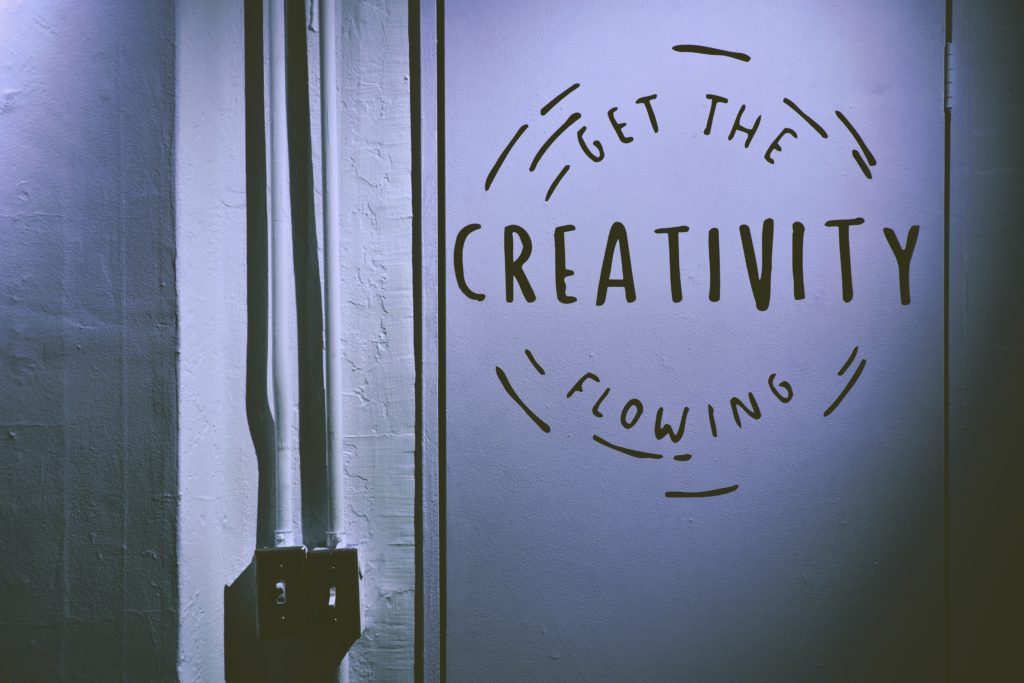When I was a kid, I didn’t want to be a fireman, math teacher or vet when I grew up. All noble professions, but I was always called to create something with my hands. By 18, I was working in the comic book industry. While other kids were playing ball with their friends, I was home drawing. It seemed normal to me at the time, but looking back from this vantage point, I’m actually pretty impressed with 18-year-old me, and grateful for the journey that got me here.
Today I look around and see so many people quitting their jobs and looking for disciplines that are attached to their unique purposes. It’s daring and brave — and I admire it deeply.
A young artist recently asked me if I had any advice for them. I’ll share it here too. If you are pursuing a career as an artist, here’s what I would recommend.
- Treat your art as a job everyday. I’d wake up, walk the 6 feet to my art table, and get to work drawing. Whether you’re writing, drawing or acting, you have to do it. Raul Julia started out performing Othello in the park. When you’re an artist, you get up and do the thing, every single day. You do your craft, even if no one notices (yet).
- Put yourself out there. Late mornings, I’d cold call people and introduce myself. This is how I met Joe Orlando and Dick Giordano from DC Comics. I’d go to comic book offices with my portfolio, and ask for people who worked there. This is what my mentor, Moses, told me to do. He said most of the time I’d leave without work. But one day I’d leave with work. And that’s exactly what happened. These days, you probably don’t need to show up on doorsteps. Social media provides a real opportunity to get your work out there.
- Put shoes on every day. There are people who work in slippers or pajamas. I absolutely cannot. Working without shoes? I would not get a single thing done. Getting dressed, even in a uniform like mine (black t-shirt, gray pants, comfortable leather shoes) puts me in the mindset.
- Create a sacred space for your craft. This doesn’t have to be elaborate or beautiful. It can be anything. A spot that energetically says: This is where I do work! When I lived on Edgar Allan Poe Street in Upper Manhattan, mine was an art table facing a window. Now, it’s a studio with the works. It can be a chair or a corner, but it will be the space where the creation happens.
- Build stamina. Be able to deliver. In comics, you’re doing 22 pages a month and you have to keep pace. Andy Helfer instilled in me that missing a deadline was not an option. Ever. That’s a major mark on your reputation. So I started with deadline-light jobs to build up my stamina. As your stamina grows, set a daily minimum. One page a day. Steven King writes 2000 words every day.
- Stop relying on talent. You might be innately talented, but a huge part of being good is being able to show up and actually do the work. On demand. On deadline. Every single day. The only way you can learn to do that is by repetition. I did years of crappy art, where I knew I wasn’t matching my inner goals. Did I realize this at the time? YES, which is why I worked so hard. Being an artist isn’t about waiting for the muse. It’s about diving in and working.
- Embrace discipline to create momentum. When you do what you do, in the place you do it, it creates an energy around you — and from within you — that draws the attention of those who need what you do. This is part of what gets you found. I have found that the law of attraction is real. It works whether you’re a master criminal or a master director!
- Don’t wait for confidence. You might think I had massive courage or confidence to walk into comic book offices. I didn’t. Putting myself out there was traumatic. It was just the only option. If you’ve grown your stamina, if your art chops are strong, if you’re treating your art like a business, then you must put yourself out there. Don’t worry so much about self-doubt. The doubt keeps us growing.
- Understand the role money plays. I think money is disrespected a lot. Many artists act like it’s a dirty thing. Some artists don’t want to sully the purity of their vision by doing it for the money. I think money is great; it makes things happen! You’ve got to honor the people who give you the money to execute the vision — because it’s all a part of the creative process! Remember, Michelangelo worked on commission. The sculpture of David, and the ceiling of the Sistine Chapel wouldn’t exist without money. Money gets your work seen on a bigger scale, but money alone can’t accomplish anything. It goes hand-in-hand with creativity. When the robotic shark in Jaws kept failing, Steven Spielberg had to create tension with a fin and water. And boy, did he ever. That’s where creativity and money empower each other.
I have such strong feelings of camaraderie for those of us who create — whether storyboard artists like me, producers, directors, technicians, writers, make-up artists, editors or any kind of artist or maker. I want them to be able to profitably pursue their craft!
These are the tips that have served me well. I hope they help you, too.


 Producers…Hire the right storyboard artist (or regret it later).
Producers…Hire the right storyboard artist (or regret it later). Directors…Which Style Storyboard Do You Prefer?
Directors…Which Style Storyboard Do You Prefer?